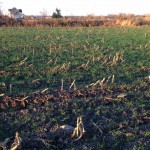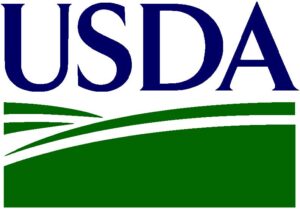As my 9 year old daughter and I drove past a number of dairy farms in Addison County this spring day, she said, “Wow, that grass is so green, it doesn’t look real.”
“That grass is special,” I said, “It’s a cover crop.” We were looking at a beautiful stand of cereal rye, seeded in the fall following the silage corn harvest. Soon after snow melt, the rye fields green up–they break dormancy earlier than other cereals and quickly start producing.
Over the past few years, more and more farmers have adopted the practice of cover cropping as they realize the benefits that these crops can offer their farm fields, including protection of nutrient and soil resources, suppression of weeds, increased soil organic matter, and even extra feed for their livestock. University of Vermont Extension as well as a host of other organizations, including USDA NRCS, Vermont Agency of Agriculture FAP, and Vermont Association of Conservation Districts, among others, have been working with farmers to support the adoption of this practice. For example, both the UVM Extension Northwest Crops & Soils (NWCS) Program and UVM Extension Champlain Valley Crop, Soils & Pasture Program teams have been conducting research, conferences, and field days to increase our collective understanding of what and how to grow cover crops in our Vermont growing conditions. Out Croppings, a blog of the NWCS program is now dedicating its posts to cover cropping and other soil health topics.
As we prepare for Green Up Day here in Vermont the first weekend in May–a tradition our state alone has been practicing since the 1970s–it occurs to me that this year, and hopefully for many years to come, we’ll celebrate a greener Green Up Day, thanks for our farmers who cover crop!







